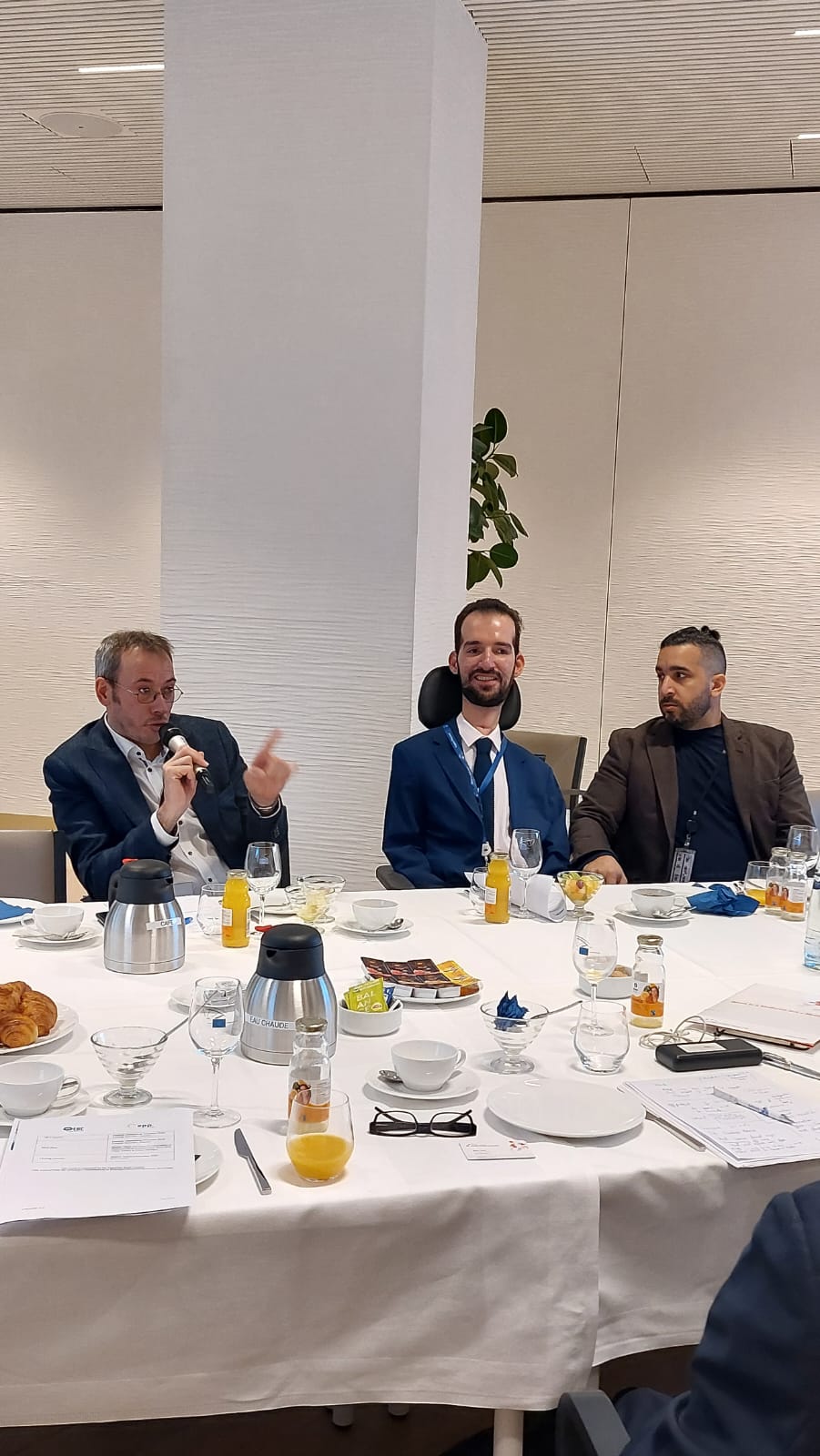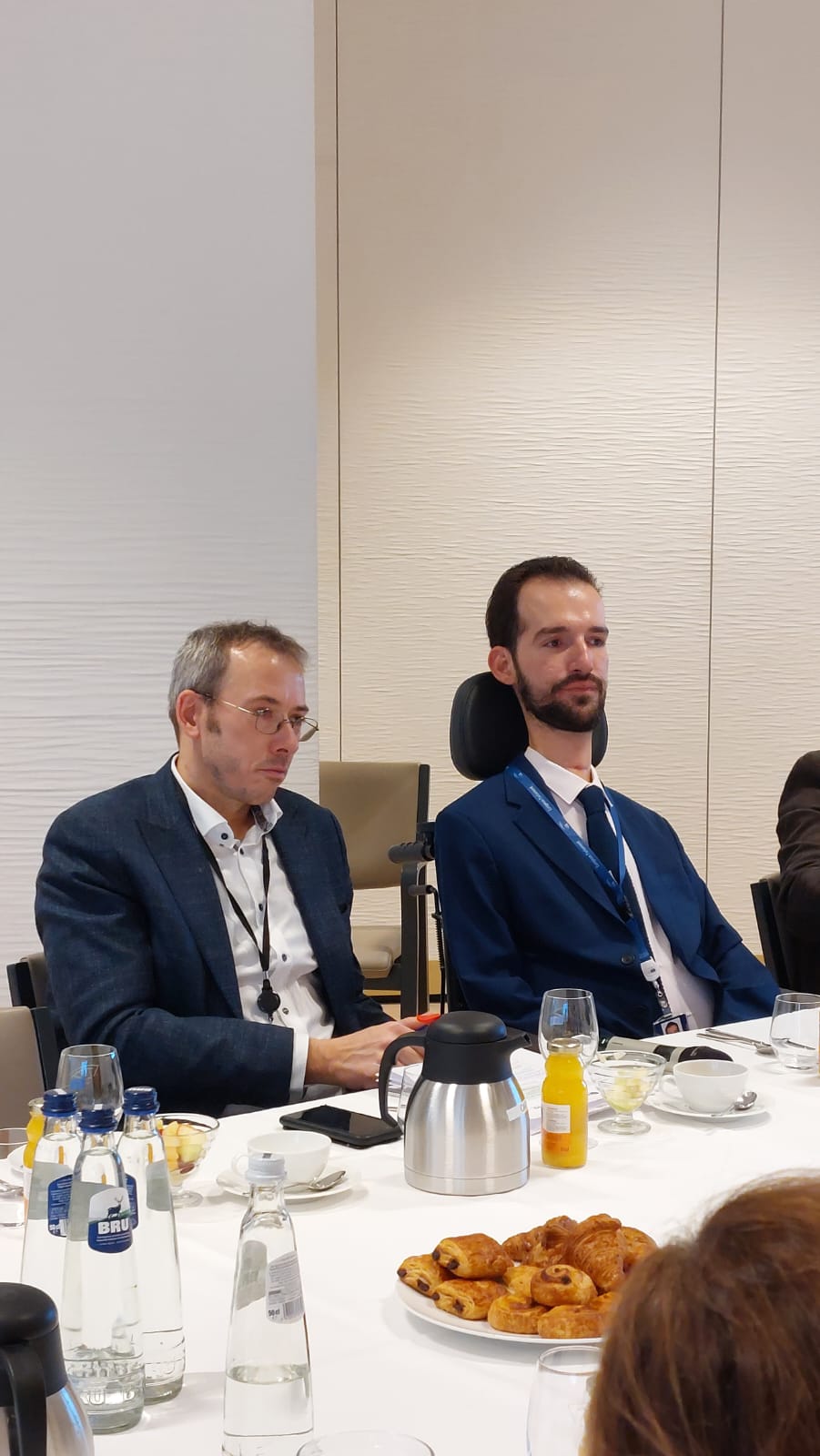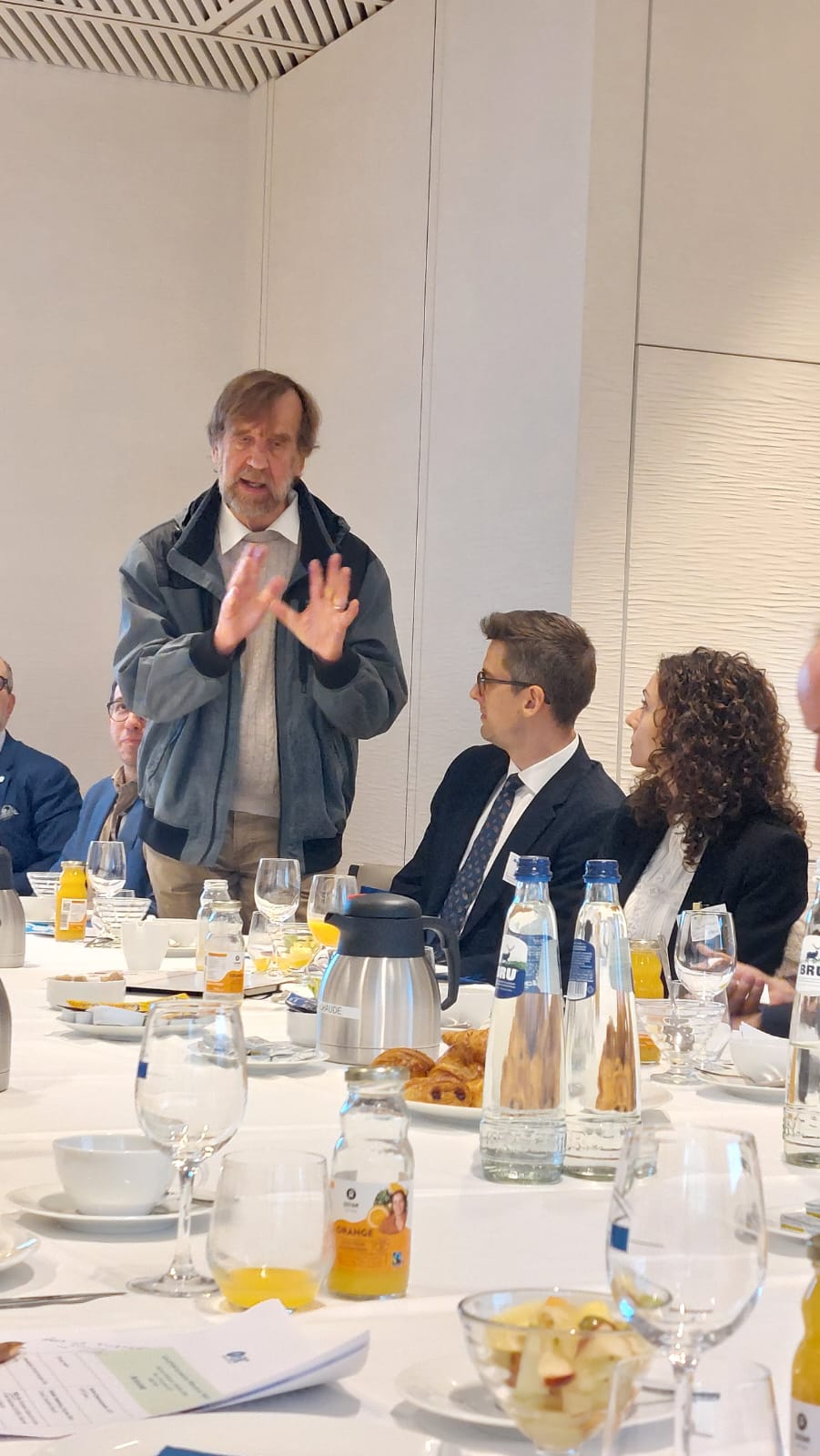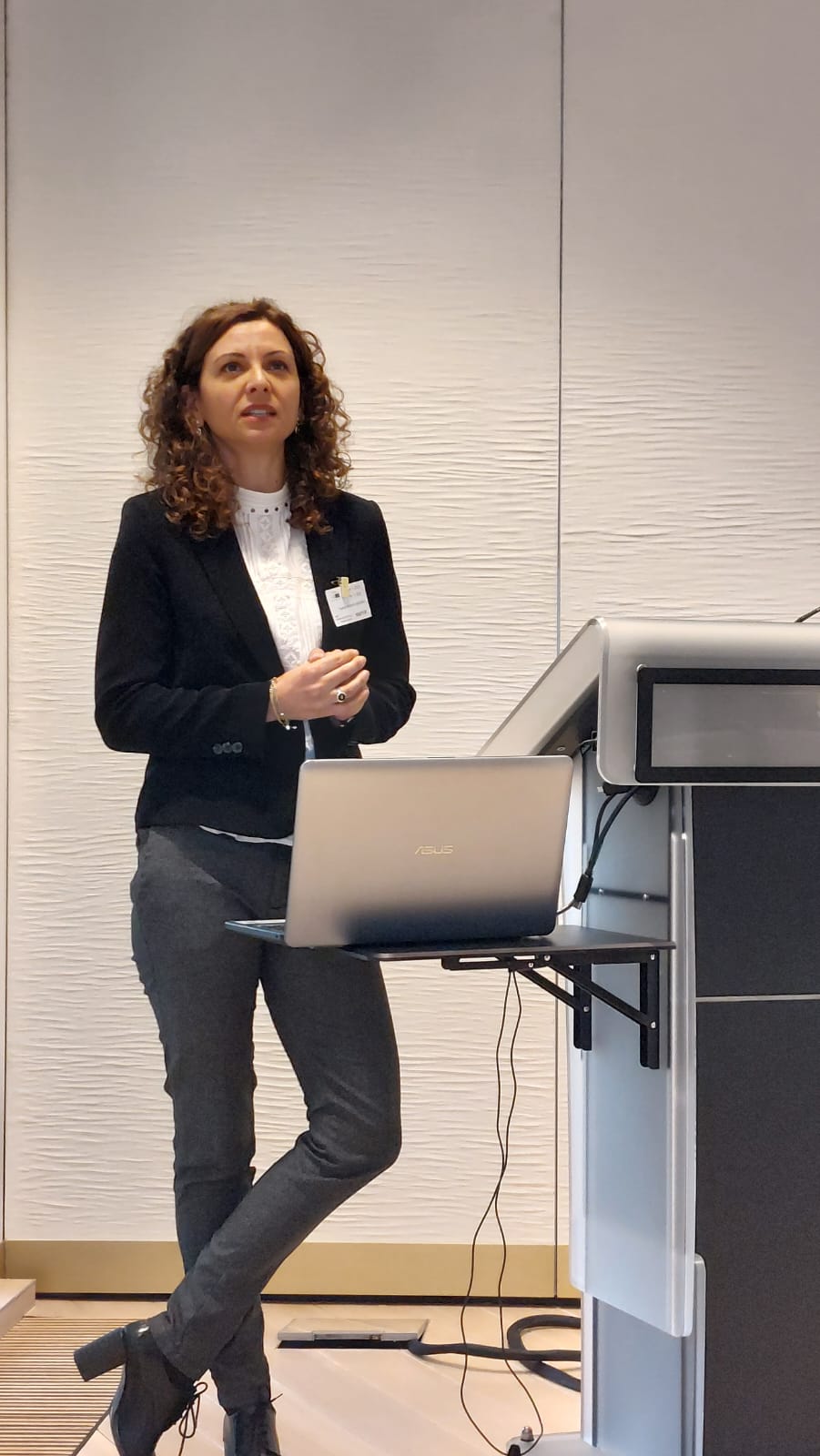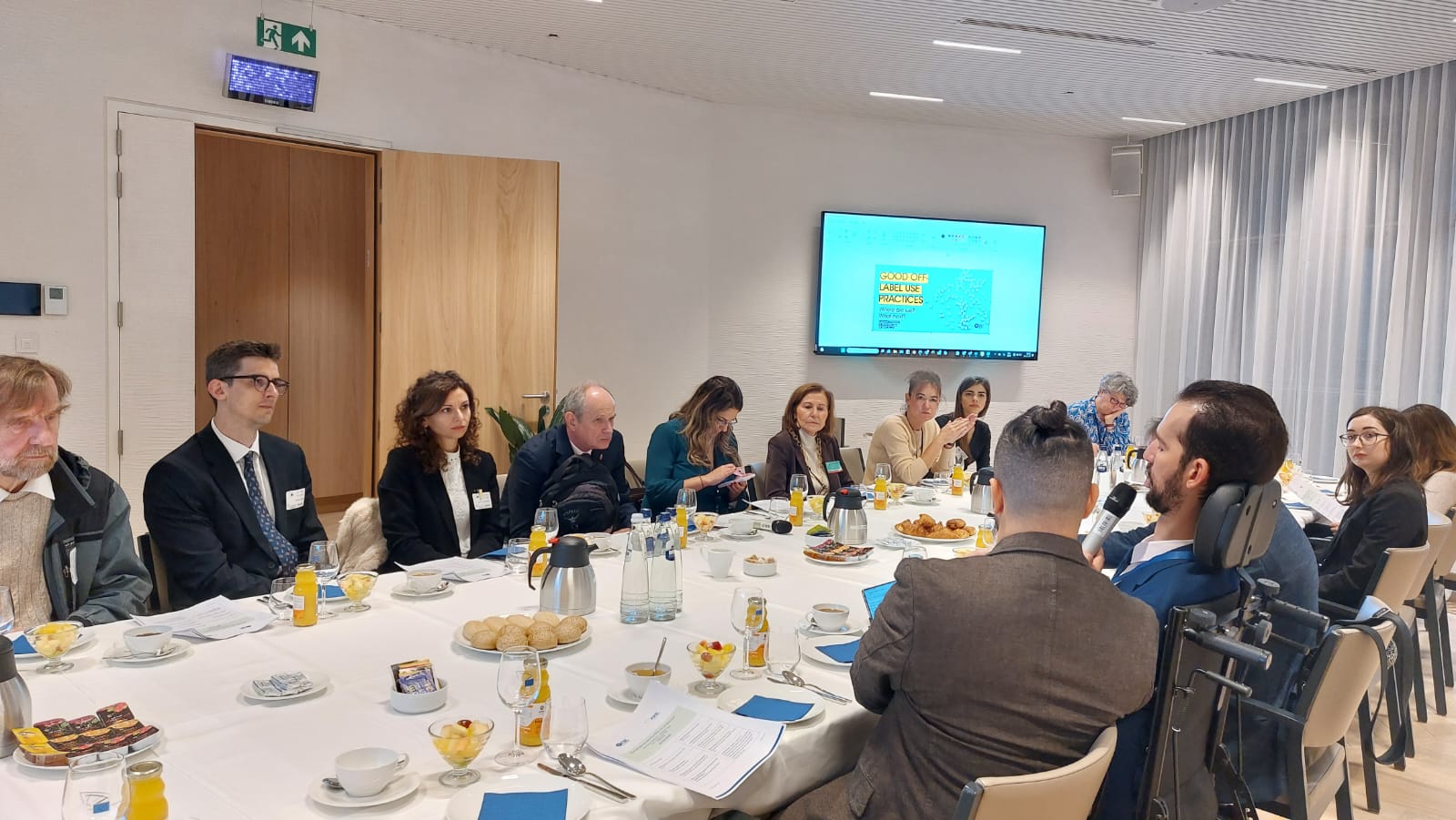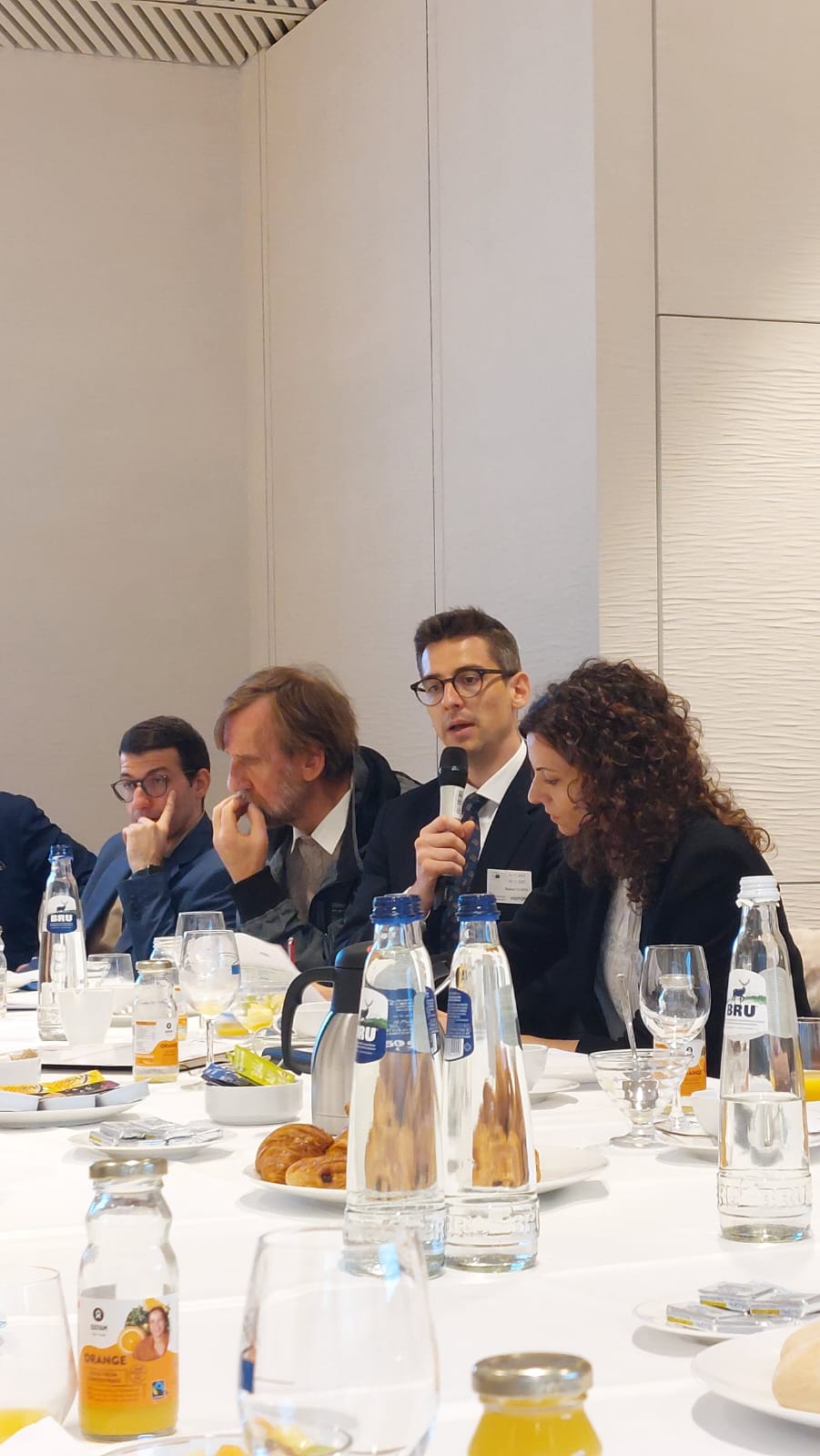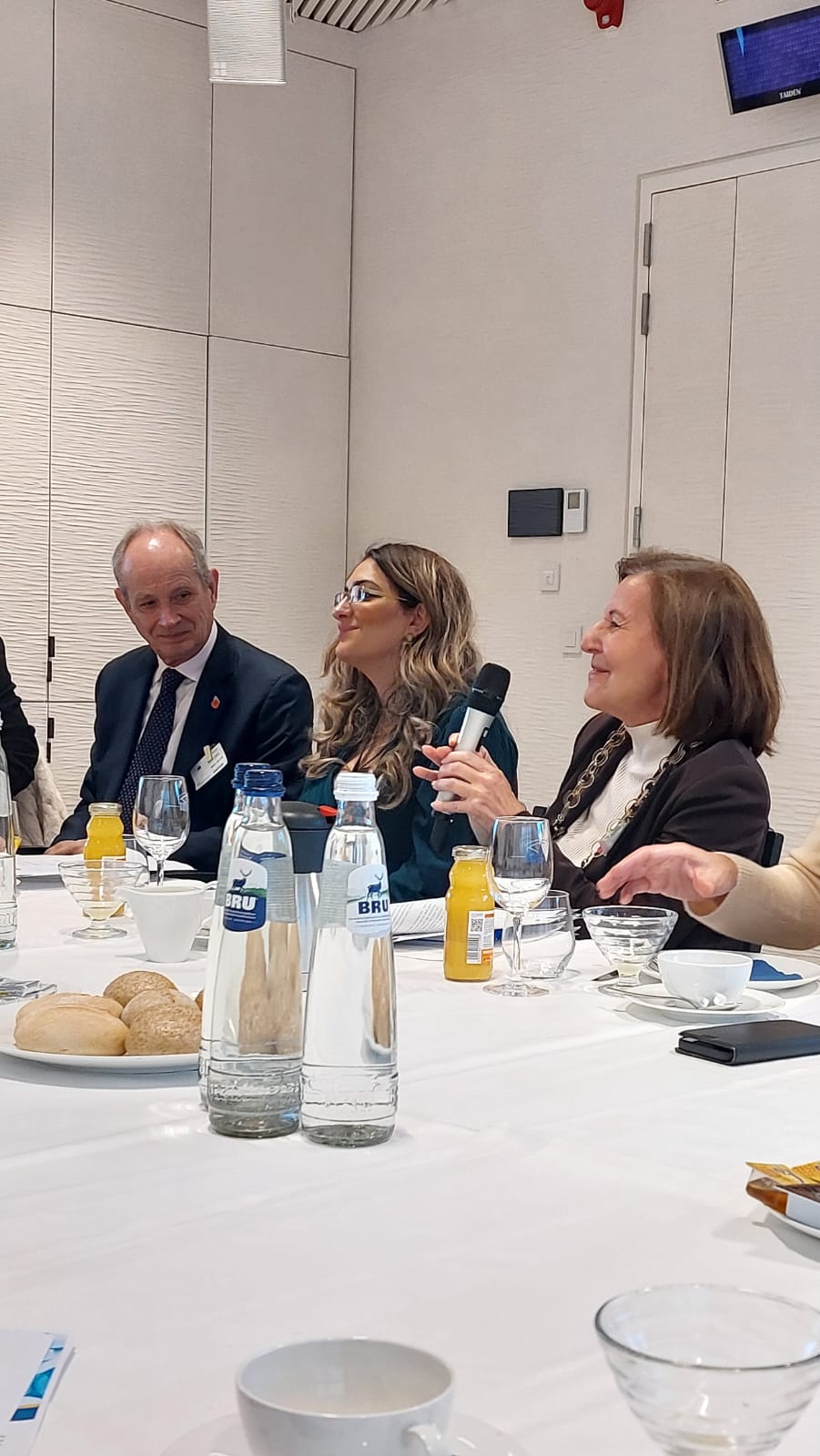On 14 November 2023, the European Brain Council (EBC) held a meeting in the European Parliament in Brussels to discuss ‘Good off-label use practices: Where are we? What next?’, hosted by MEP Stelios Kympouropoulos (EPP, Greece).
The meeting touched upon both off-label use and repurposing. Off-label use is the practice of using a medicine or a medical device outside its authorised indication. It can be of benefit to patients when no other treatment option is available, as is often the case in rare diseases or in child and adolescent care. Drug repurposing is the process of developing an existing drug in an indication outside the scope of the original indication, with the ultimate purpose of obtaining a new regulator-approved indication. They both share similar concerns and calls for action.
The aim of the meeting was to reconnect with Good Off-Label Use Practice (GOLUP) Declaration[1] promoters, exchange ideas and experiences on the good off-label use of medicines. The goal of the meeting was to involve a broad panel of stakeholders to promote a common European approach for off-label use.
In his introduction, MEP Kympouropoulos, welcomed the timeliness of the event as it is taking place during the pharmaceutical legislation revision and the European Medicines Agency (EMA) EU repurposing pilot project that supports not-for-profit organisations, academia, and patients.
He acknowledged that the off-label use of medicinal products was often a necessity in areas of unmet medical needs. He reminded the audience that the prevalence of off label use in the EU in both the paediatric and adult population was high in a broad range of therapeutic areas such as rare diseases, oncology, psychiatry, neurology, and rheumatology, in both hospitals and outpatient settings. He regretted that, while not optimal but essential to address unmet medical needs, the manner in which countries dealt with the off-label use of medicines was not harmonised across the EU.
Kympouropoulos advocated for a common approach to off label use in the EU, with clear guidelines.
Frédéric Destrebecq, Executive Director, European Brain Council, agreed with S. Kympouropoulos that this meeting was a timely one, with the EMA ‘Repurposing Project’, the recent Spanish EU presidency event on ‘Repurposing and better use of clinical data’ and the revision of the EU pharmaceutical legislation. He also warned that off-label practice posed a range of quite different challenges such as ethical and legal issues for healthcare professionals, increased risk for patients, patient information and consent. He concluded that the risk capacity for the EU was to keep a research-friendly model and that off-label use needed a greater recognition both at national and EU level.
Mark Isles, Chair and Executive Director, European Alliance for Access to Safe Medicines (EAASM), talked about the patient safety imperatives associated with off-label use. To-date, in the EU, the governance of off-label use of medicinal products is left to individual member states. He was optimistic that the promising developments generated by the European Health Data Space initiative at EU level could lead to greater awareness about off-label use, member states being becoming more harmonised and connected.
Isles alerted the audience that therapeutic decisions had been and are still being made on the basis of cost. The financial straits generated by the COVID pandemic that put the emphasis on the prescription of cheaper drugs can put patients’ safety at risk. He gave the example of unlicenced (and cheaper) general disinfectants and cleansers made and intended for use used in pre-operative settings for skin disinfection having caused damage in patients. He also gave the example of single use medical devices being also re-used besides the lack of proven value. Besides raising ethical and legal concerns, this goes against the WHO recommendations to discard and destroy by incineration single-use devices once they have been used.
Unfortunately, the patients are not informed about these healthcare practices made as a result of cost rather than the patient’s interest. Additionally, the administration of off-label medicines is not adequately monitored and there is no transparent and mandatory reporting of adverse events. The impact of medical errors can lead to death and are costly and the patient’s quality of life of patients is not measured either.
In his conclusion, M. Isles insisted that off-label use of medicinal products or devices must be done safely. He reminded the GOLUP declaration definition of good practice. He added that EU guidelines to ensure good off-label use practices, truly involving the patient, should build on this definition and be developed as a matter of urgency.
Prof. Marc Dooms, Senior Orphan Drug Pharmacist, University Hospitals, Leuven, BE, was adamant to broaden the discussions beyond medicines and include the good-off label use of medical devices, especially for rare diseases. He particularly described the off-label use of devices used for completely different situations: premature babies presenting with patent ductus arteriosus being implanted microvascular plugs or neonates with congenital heart flow being implanted with a microvascular plug intended for adults. Despite existing guidelines having helped reduce the risk taken with such devices, Prof. Dooms insisted that medical devices being used in completely different situations than those originally intended require the patients’ or carer’s informed consent.
Prof. Dooms acknowledged that off-label use of medicines had yielded good results, some drugs having been repurposed and authorised based on off-label use. However, we do not know if this has been the case for medical devices yet.
Different parties are involved in off-label use: authorities (looking at safety and efficacy), payers (sometimes hesitant to reimburse), companies (not allowed to mention off-label use), patient (having to be informed, with the special case of children) and the prescriber (responsible for the prescription). Prof. Dooms called for all stakeholders to join forces to find solutions together. Regulatory bodies must shift away from a narrow interpretation of regulatory responsibility to a broader and more public health-oriented approach. Regulatory institutions in Europe will have to compromise to develop the necessary protection as patients and clinicians should not be expected to do so.
Prof. Dooms, as the author of the GOLUP Declaration, also recalled the Declaration’s recommendations as a good starting point to make progress. He also observed that patients say ‘yes to the right to try’ and that we cannot allow the loss of currently available and essential orphan paediatric devices, regardless of what the label says.
Yoana Nuevo Ordóñez, Responsible for the Innovation Office and NSA Unit / Spanish Agency of Medicines and Medical Devices (AEMPS) and Member of the EU-IN Network, presented the European Medicines Agency (EMA)/ Heads of Medicines Agencies European Repurposing Pilot Project.
The aim of the project is to test a framework for repurposing off-patent medicines. The framework will support not-for-profit organisations and academia (who are generally not equipped or do not have the resources nor the intention to legally take the role as applicant / market authorisation holder when seeking approval or for fulfilling post-marketing responsibilities) to gather and generate sufficient evidence on the use of an established medicine in a new indication to have this new use formally authorised by a regulatory authority. This should fill their lack of knowledge and resources in terms of understanding the regulatory routes and requirements, what additional data may exist or needs to be generated de novo, how to access industry non-published medical data and non-clinical data, how to find the market authorisation holder of a finished product to collaborate with to bring the new indication on the label.
Under this EU repurposing pilot, the new indications should respond to important public health needs. As such, several steps will need to be followed: assessing the clarity and comprehensibility of the framework, checking of the feasibility of compiling the required data for the scientific advice, identifying the gaps and evaluating the needs for adaptations, monitoring of the progress beyond the scientific advice towards filing a new indication, creating a report to assess the results of the pilot. As such a ‘Repurposing Observatory Group’ gathers a number of stakeholders (European Commission, EMA, the European Federation of Pharmaceutical Industries and Associations (EFPIA), the European Confederation of Pharmaceutical Entrepreneurs (EUCOPE), Medicines for Europe, the International Association of Mutual Benefit Societies (AIM), the Anticancer Fund, and Rare Diseases Europe (EURORDIS), has been set-up to oversee the implementation of the pilot project. A ‘Repurposing Sub-Group’ gathering EU National Competent Authorities from Belgium, Finland, France, Germany, Hungary, Italy, Ireland, Portugal, Spain, Sweden, the Netherlands, and Norway, has also been set-up to give a regulatory support for the right performance of the pilot.
Nuevo Ordóñez gave an overview of the candidate projects that had been selected: for the EMA’s candidates, 71% came from academia and 17% from not-for-profits organisations. The four AEMPS candidates were from a patient organization, an academic researcher, the European Association of Urology and a hospital researcher. The therapeutic areas covered are cardiovascular diseases, immune system diseases, inflammatory diseases, neurodegenerative diseases and oncology.
The challenges observed to-date are the stakeholders’ expectations from the scientific advice on programme development, study design versus pre-assessment data; understanding the scientific advice, market authorisation application and regulatory requirements and pathways to develop the regulatory strategy for the development and filing; securing the programme development due to challenges to find funding; challenges in finding market authorisation holders supportive to engage on including the new indication on the market authorisation of their products.
The opportunities observed are the enhancement of the interactions between the not-for-profit organisations with regulators, a better understanding of the regulatory and scientific requirements.
The pilot evaluation and the selected repurposing projects are being evaluated in France, the Netherlands and Spain with the end goal to find a harmonised strategy in the near future. The report on the EU Repurposing Pilot is expected to be published in 2024.
Besides, Horizon Europe launched two drug repurposing initiatives in 2022: Repurposing of Medicines 4 All, a European platform for Medicines Repurposing, and RePo4EU, an on-line platform for precision drug repurposing and a data hub for key information, training resources, matchmaking, and collaboration. The European Commission’s new pharmaceutical legislation contains some articles related to repurposing (regulatory data protection for repurposed medicinal products, scientific opinion on data submitted from not-for-profit entities or the repurposing of authorised medicines (art. 48), strengthened national competent authorities and EMA support to not-for-profit entities.
Nuevo Ordóñez also presented the lessons learned from the ‘Repurposing and Better Use of Clinical Data’ meeting organised by AEMPS under the Spanish 2023 EU-Presidency to promote the repurposing of medicinal products and how the better use of clinical data can help to the repurposing of medicines in the EU.
Interactions and dialogue among all stakeholders (researchers, regulators, funding bodies, SMEs, industry and patients), specific support to those who lack knowledge on regulatory requirements and interactions at an early stage, collaboration with other EU projects and increased funding mechanisms and incentives to support researchers, manufacturers and marketing authorisation holders must be enhanced. Broadening the definition of repurposing, considering the evidence provided by real world data and artificial intelligence, organising congresses and conferences to foster collaborations among stakeholders, were two other suggestions for a way forward.
The presentations were followed by a lively discussion among the participants (industry representatives, patient organisations, health professionals). Collaboration and trust among all stakeholders as well as patients’ needs were the saliant point of the discussion. How to make a bridge between the market autorisation holders’ lack of engagement and the other stakeholders’ eagerness to make patients benefit from their findings need to be nurtured. There are great expectations from Art. 48 of the Regulation laying down Union procedures for the authorisation and supervision of medicinal products for human use and the EU repurposing pilot that is seen as a promising way to address the differences in how the member states and physicians approach off label use and repurposing and ensuring patients’ safety. Financial concerns were also mentioned, particularly the economics around off-label use products being pushed because of they are cheaper, regardless of the side-effects they may entail. New indications leading to a market increase may not always lead to price reductions. The participants warned that the EU Repurposing Pilot was a great step forward, but off-label use will always remain an important tool for rare diseases, paediatric and cancer patients.
To conclude the event, S. Kympouropoulos called for principles to guide off-label use and strive to harmonise the practice across the EU, ensure patient safety and a harmonised approval system. He praised this event as being a major step forward in tackling the off-label and repurposing challenges and called for continued cooperation between all stakeholders now and after the EU elections to keep the momentum.
[1] Declaration on Good Off-Label Use Practice, 2016, https://www.braincouncil.eu/golup/wp-content/uploads/2017/11/GOLUP_Declaration.pdf



